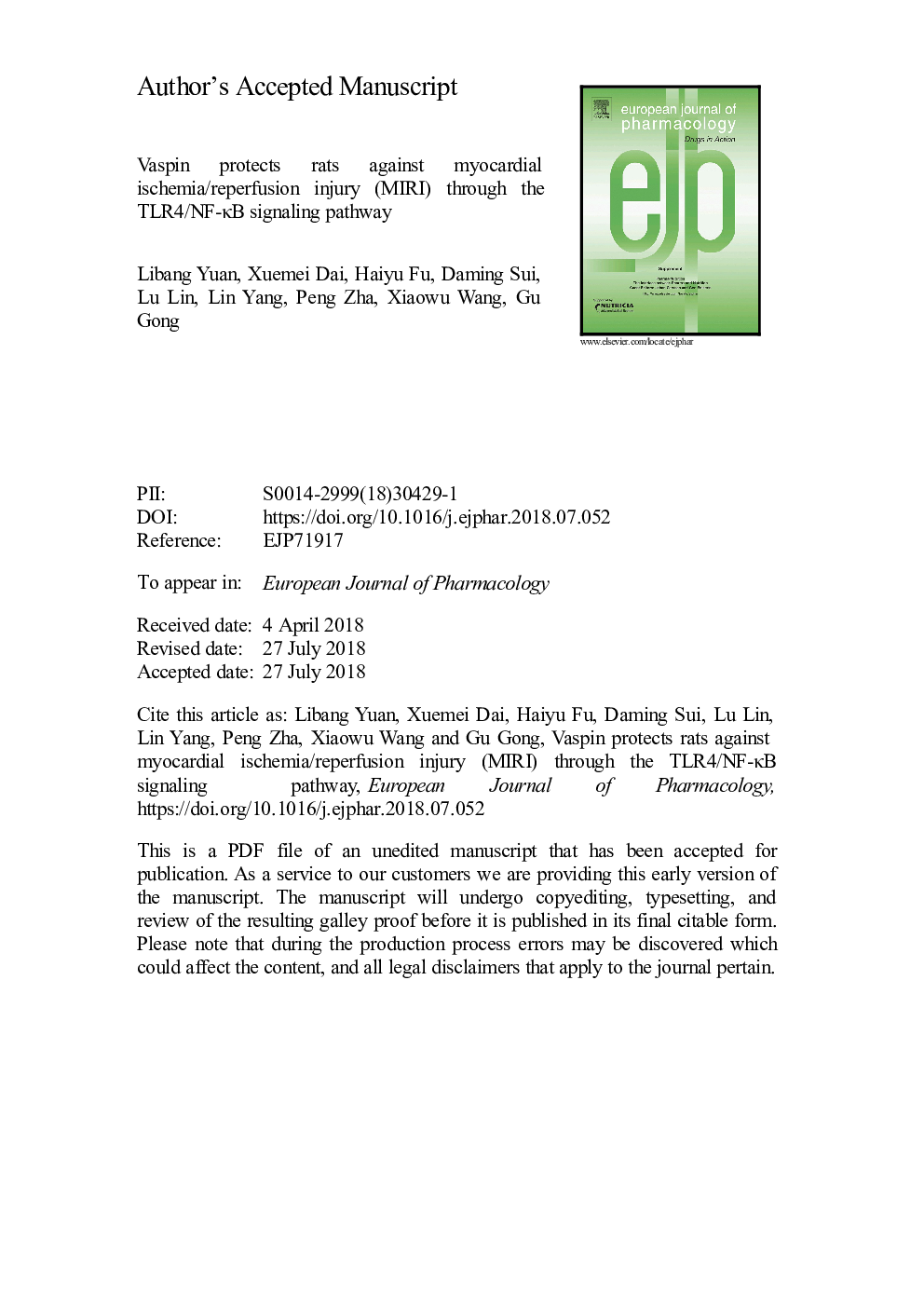| Article ID | Journal | Published Year | Pages | File Type |
|---|---|---|---|---|
| 8528870 | European Journal of Pharmacology | 2018 | 36 Pages |
Abstract
The purpose of our study was to investigate the effect of vaspin on myocardial ischemia reperfusion injury (MIRI) and explore the underlying mechanism. The MIRI model was induced with 30â¯min of left anterior descending (LAD) occlusion followed by 24â¯h of reperfusion. In vivo, the rats were randomly divided into five groups: (1) Sham, (2) MIRI, (3) MIRIâ¯+â¯vaspin (10â¯mg/kg), (4) MIRIâ¯+â¯vaspin (20â¯mg/kg) and (5) MIRIâ¯+â¯vaspin (40â¯mg/kg). In vitro, H9C2 cells were assigned to five groups: (1) control, (2) hypoxia-re-oxygenation (H/R), (3) H/R +â¯vaspin (1â¯Î¼g/ml), (4) H/Râ¯+â¯vaspin (2â¯Î¼g/ml) and (5) H/Râ¯+â¯vaspin (4â¯Î¼g/ml). As a result, vaspin ameliorated MIRI and H/R in a dose-dependent manner, as evidenced by triphenyl tetrazolium chloride (TTC) staining, TUNEL Assay and MTT assay, respectively, meanwhile vaspin decreased the levels of creatine phosphokinase-isoenzyme (CK-MB) and lactate dehydrogenase (LDH) in rat serum, moreover, vaspin could reduce the contents of interleukin-1β (IL-1β), IL-18 and tumor necrosis factor alpha (TNF-α) in serum of rats and supernatant of H9C2 cells. Furthermore, vaspin down-regulated the expression of toll-like receptor 4 (TLR4) and the phosphorylation of nuclear factor κB (NF-κB) in MIRI rats and H/R-induced H9C2 cells. In addition, patients with acute myocardial infarction (AMI) had lower levels of vaspin than patients without. In conclusion, vaspin might be a useful predictive biomarker in patients with AMI; furthermore, vaspin exhibits cardioprotective effects on MIRI which might act through inhibiting TLR4/NF-κB signaling pathway in vivo and in vitro.
Related Topics
Life Sciences
Neuroscience
Cellular and Molecular Neuroscience
Authors
Libang Yuan, Xuemei Dai, Haiyu Fu, Daming Sui, Lu Lin, Lin Yang, Peng Zha, Xiaowu Wang, Gu Gong,
